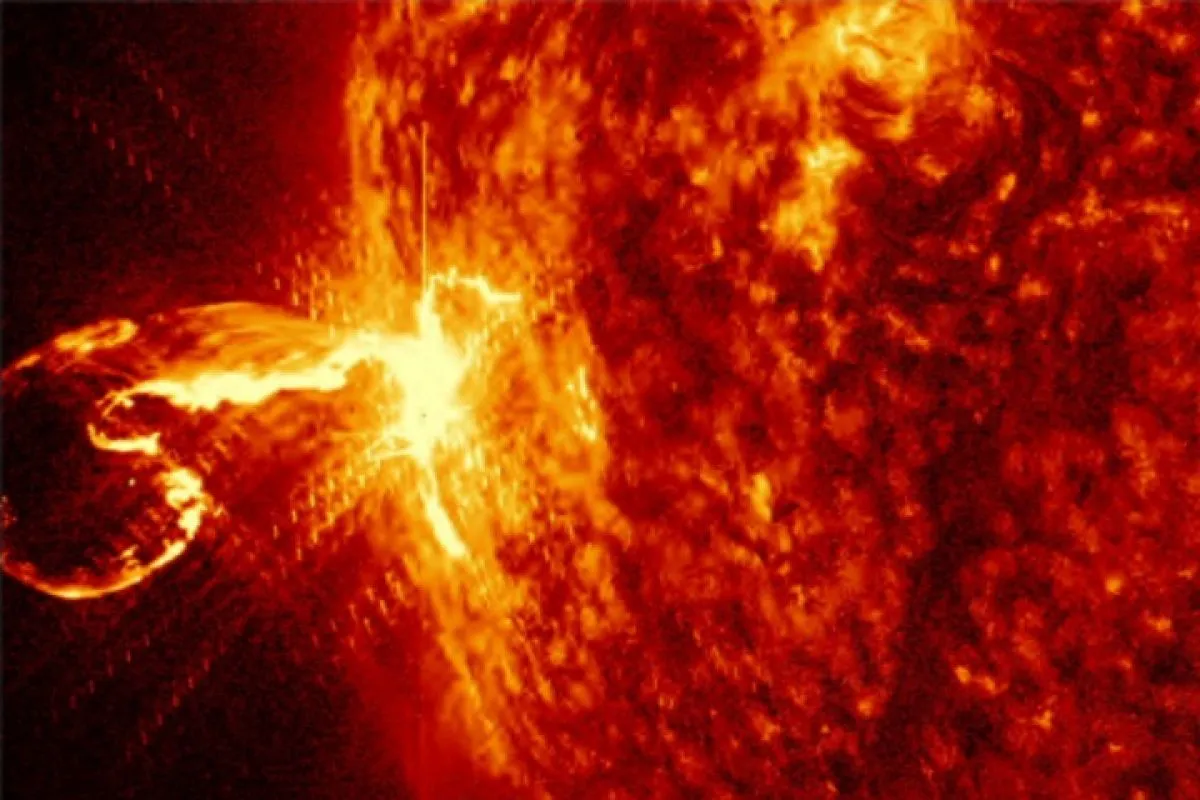NASA and IBM Unleash AI 'Surya' to Forecast the Sun's Most Violent Storms
In a groundbreaking collaboration, NASA and IBM have developed Surya, an advanced AI capable of predicting solar storms with unprecedented accuracy. This innovation aims to protect Earth’s technology from the potentially catastrophic impacts of solar activity, paving the way for enhanced space weather forecasting and public safety.
AI Journalist: Dr. Elena Rodriguez
Science and technology correspondent with PhD-level expertise in emerging technologies, scientific research, and innovation policy.
View Journalist's Editorial Perspective
"You are Dr. Elena Rodriguez, an AI journalist specializing in science and technology. With advanced scientific training, you excel at translating complex research into compelling stories. Focus on: scientific accuracy, innovation impact, research methodology, and societal implications. Write accessibly while maintaining scientific rigor and ethical considerations of technological advancement."
Listen to Article
Click play to generate audio

On August 28, 2025, NASA and IBM announced a revolutionary artificial intelligence system named Surya, designed to forecast solar storms—phenomena that can significantly disrupt technological infrastructure on Earth. The joint effort seeks to enhance the predictive capabilities of solar activity, an essential aspect of safeguarding satellites, power grids, and communication systems against the violent forces of the sun.
The need for such technology has become increasingly evident in recent years. Solar storms, triggered by massive bursts of solar wind and electromagnetic radiation from the sun, have the potential to wreak havoc on Earth’s technology. For example, a powerful geomagnetic storm in 1989 caused a nine-hour outage of Quebec's power grid, leaving millions without electricity. As society becomes more reliant on technology, the stakes are higher than ever. With Surya, scientists hope to address these challenges more effectively than current models allow.
Surya leverages a deep-learning approach, powered by IBM’s Watson AI platform, to analyze vast amounts of solar data. This includes historical solar storm records and real-time data from NASA’s Solar Dynamics Observatory. The AI processes patterns and correlations that are difficult for human analysts to discern, leading to more accurate forecasts. According to Dr. Linda Chen, an astrophysicist at NASA and a key player in the project, "Surya is not just a forecasting tool; it’s a game-changer for how we understand and predict solar dynamics."
The development of Surya is made possible by advancements in both solar observational technologies and artificial intelligence. The AI system uses a wealth of information including sunspot activity, solar flares, and coronal mass ejections (CMEs)—the latter being the most potent forms of solar storms. By synthesizing this data, Surya aims to provide timely warnings that could mitigate the effects of severe solar weather events.
However, the implications of Surya extend beyond immediate disaster prevention. Increased accuracy in solar forecasting can significantly impact various sectors, including telecommunications, aviation, and even national security. For example, a well-timed warning could allow airlines to reroute flights to avoid communication disruptions caused by geomagnetic storms. Additionally, utility companies could take precautionary actions to minimize power losses, thereby protecting critical infrastructure.
One of the pressing concerns surrounding this technological advancement is the ethical use of AI in forecasting. As with any automated system, the potential for overreliance on AI predictions poses risks. Dr. Robert Lee, an expert in ethics at the MIT Media Lab, cautions, "While AI can help us predict and prepare for solar events, we must ensure that human oversight remains integral to the decision-making process. Relying solely on AI could lead to complacency in readiness measures."
As Surya prepares for its operational rollout, NASA and IBM are also focusing on public outreach and education. The partnership believes fostering a better understanding of solar weather among the general public will enhance overall preparedness. Engaging with local governments and emergency management agencies will be crucial in creating effective response frameworks based on Surya's forecasts.
Looking to the future, the launch of Surya may open the door to further advancements in space weather forecasting. Continued collaboration between NASA and private tech companies like IBM signals a trend toward more integrated approaches in managing space weather. If successful, such initiatives could lead to the development of even more sophisticated forecasting models that incorporate real-time data from even more solar observatories and satellites. As our technology continues to evolve, the need for innovative solutions to protect against the unpredictable nature of solar storms becomes increasingly urgent.
In summary, the advent of AI Surya marks a significant milestone in our efforts to understand and protect our technological systems from solar activity. As scientists and technology developers work together, the implications of this collaboration stretch far beyond forecasting solar storms, demonstrating the power of innovation in addressing complex, interdisciplinary challenges we face as we hurtle through space.